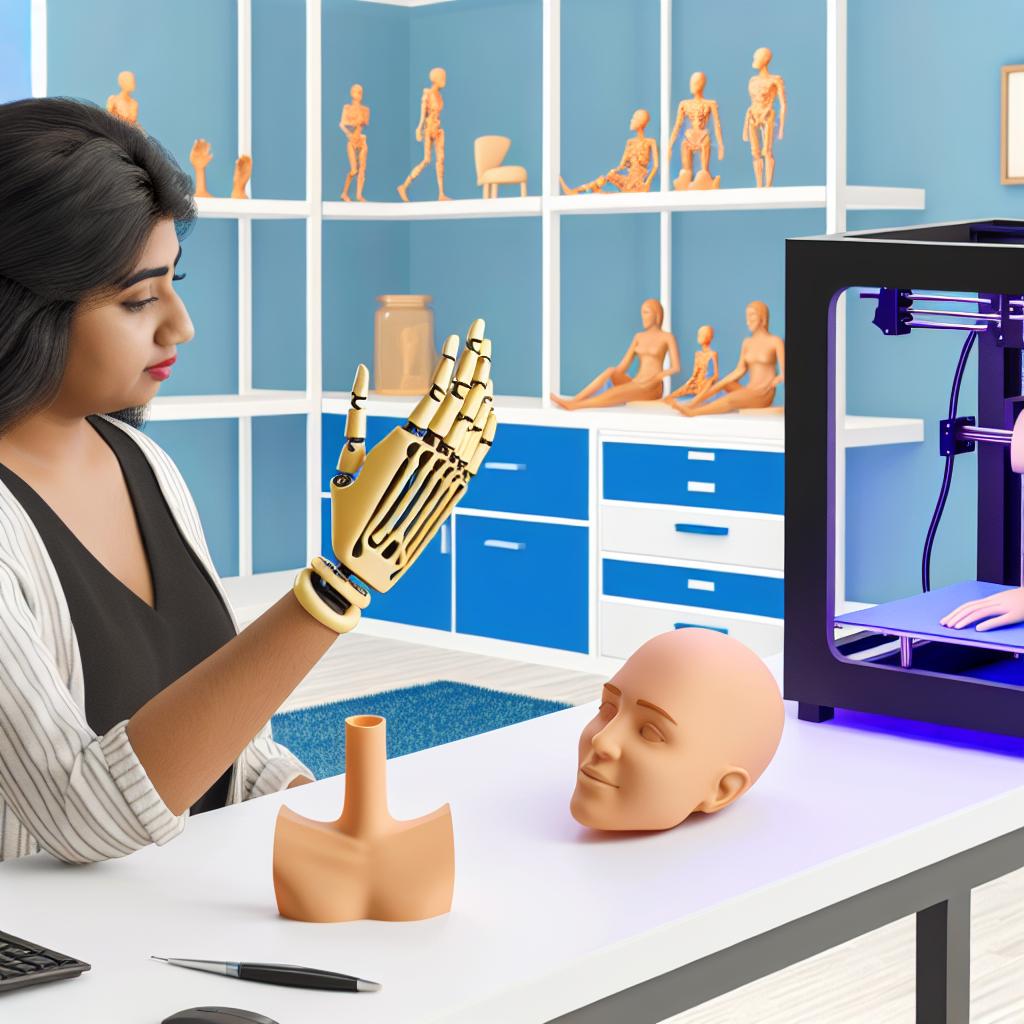Introduction
In recent years, 3D printing has emerged as a revolutionary technology across various sectors, including healthcare. One area where it is making significant strides is in the design and production of prosthetic limbs. By offering numerous benefits over traditional manufacturing processes, 3D printing is changing how prosthetics are conceptualized, created, and customized. This transformation is providing enhanced opportunities for individuals who rely on prosthetic devices, ensuring they have access to more personalized options that better align with their specific needs.
Advantages of 3D Printing in Prosthetic Design
The advantages of employing 3D printing in the realm of prosthetic design are numerous, with customization being at the forefront. The technology allows for the creation of prosthetic limbs that are tailored specifically to fit the unique anatomical characteristics of the individual user. This personalized approach means enhanced comfort and functionality, significantly improving the everyday experiences of those who rely on these devices. Unlike traditional prosthetics, which often require time-consuming and costly post-production modifications, 3D printing enables pinpoint accuracy during the design phase, thereby reducing or even eliminating the need for further adjustments.
Another critical aspect where 3D printing shines is cost-effectiveness. The conventional production of prosthetic limbs can be prohibitively expensive, primarily due to the intricate and labor-intensive processes involved. In contrast, 3D printing streamlines production by using fewer materials and minimizing labor requirements. By lowering costs, this method makes prosthetics more accessible to a broader demographic, including individuals in developing regions and those who do not benefit from comprehensive insurance plans. This democratization of access can lead to substantial improvements for many who otherwise might not afford these essential devices.
Speed and Efficiency
When considering the advantages of 3D printing, the aspect of speed cannot be overlooked. Traditional prosthetic manufacturing is often time-intensive, with processes extending over several weeks or even months from inception to delivery. The lag inherent in these traditional processes can delay the adaptation period and rehabilitation for patients. However, the introduction of 3D printing has revolutionized this timeline. This expediency not only enhances the patient experience by providing quicker access to essential devices but also aids healthcare providers in managing patient care more effectively.
Innovations in Material and Design
Another area where 3D printing is pushing the boundaries is the use of innovative materials and design strategies. Technological advancements have enabled the utilization of a wide range of materials—from lightweight polymers to robust metals—in crafting prosthetic devices. These materials significantly contribute to creating prosthetics that are not just durable but also adaptable to a range of functional requirements. Furthermore, the ability to work with such diversity in materials has opened the door for aesthetic customization, allowing users to integrate elements of personal style into their prosthetics, thereby enhancing personal expression.
Moreover, the incorporation of innovative designs in prosthetics is paving the way for functionality enhancements. 3D printing technology empowers designers to create complex structures mimicking natural anatomical movements more closely. Such structural intricacies were previously unattainable with conventional manufacturing techniques. This innovation fosters a better integration of the prosthetic devices into the user’s lifestyle, enhancing the overall functionality and user satisfaction.
Challenges and Future Directions
Despite the unique benefits of 3D printing in prosthetic design, the path is not devoid of challenges. A predominant challenge is the necessity for specialized skills and equipment, which may not be universally accessible across all regions. This lack of access can create disparity, particularly affecting those in underserved areas where acquiring the necessary technology and expertise poses a significant barrier.
Additionally, ensuring that 3D-printed prosthetics comply with rigorous medical standards and regulatory requirements is critical. For the medical community, meeting these standards is an ongoing endeavor that necessitates continuous assessment and improvement of the processes involved.
Looking towards the future of 3D printing in the prosthetics field, the prospects are promising with significant research underway to overcome existing barriers. Numerous initiatives focus on enhancing the accessibility of 3D printing technology, alongside the development of new materials that could further optimize the functionality and affordability of prosthetics. By continuing to advance these areas, we can anticipate exciting progress in making these devices more inclusive and widely available.
Conclusion
In summation, the advent of 3D printing is substantially transforming prosthetic design. Through unparalleled customization, cost reduction, and accelerated production timelines, 3D printing is poised to reshape how prosthetic limbs are manufactured and utilized in the health sector. As technological advancements continue, the potential for further breakthroughs in this domain is enormous, signifying a promising trajectory toward more advanced, accessible, and personalized healthcare solutions. The ongoing evolution within this field highlights the crucial shift towards a more inclusive model of medical care, wherein technological innovation plays a pivotal role in improving the quality of life for countless individuals worldwide.
